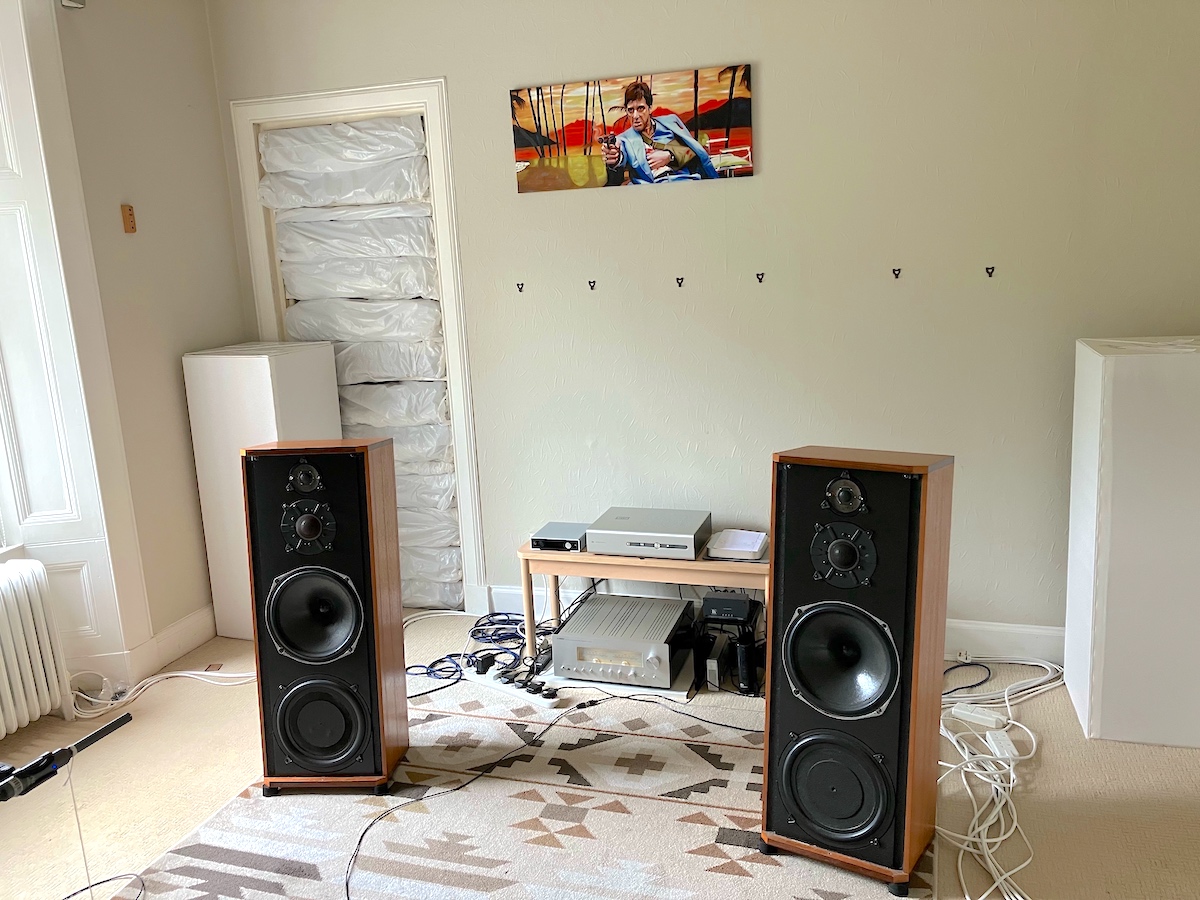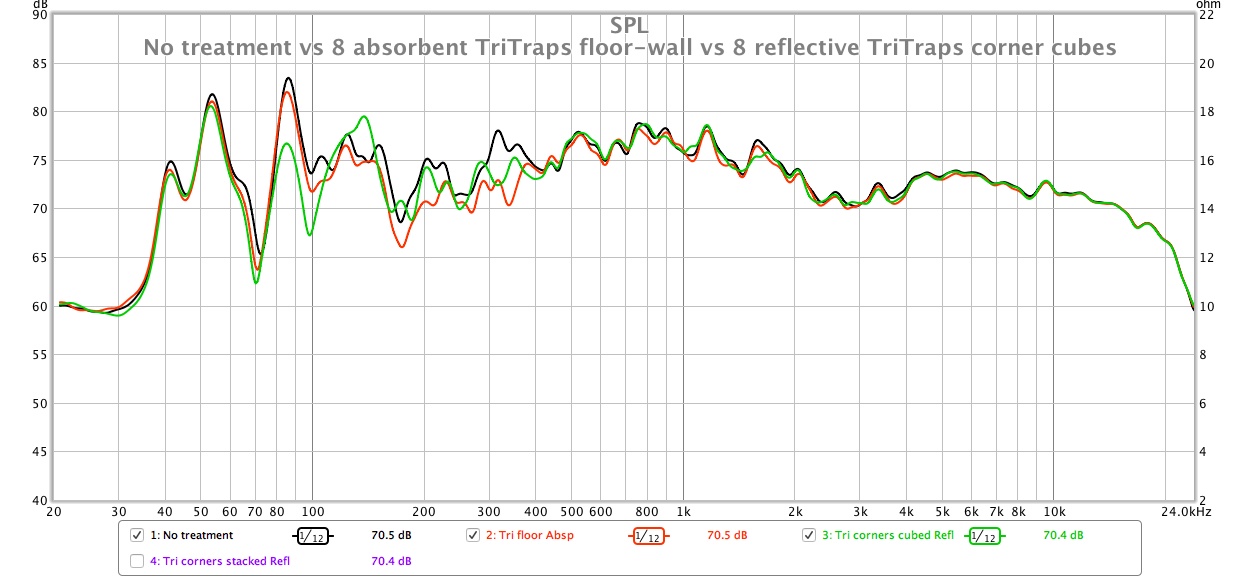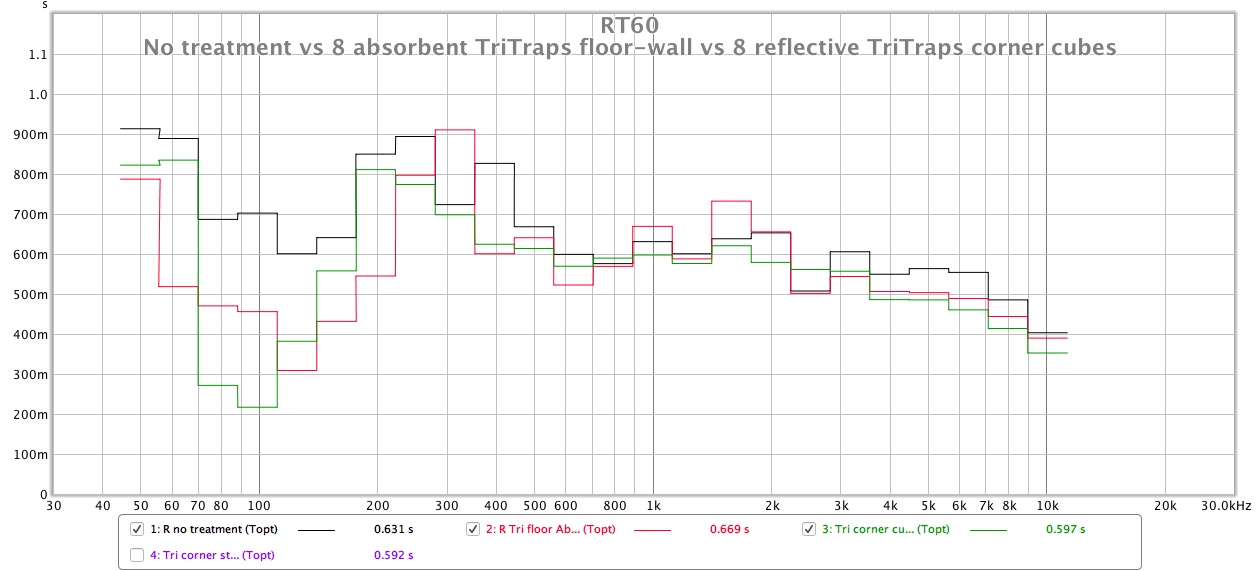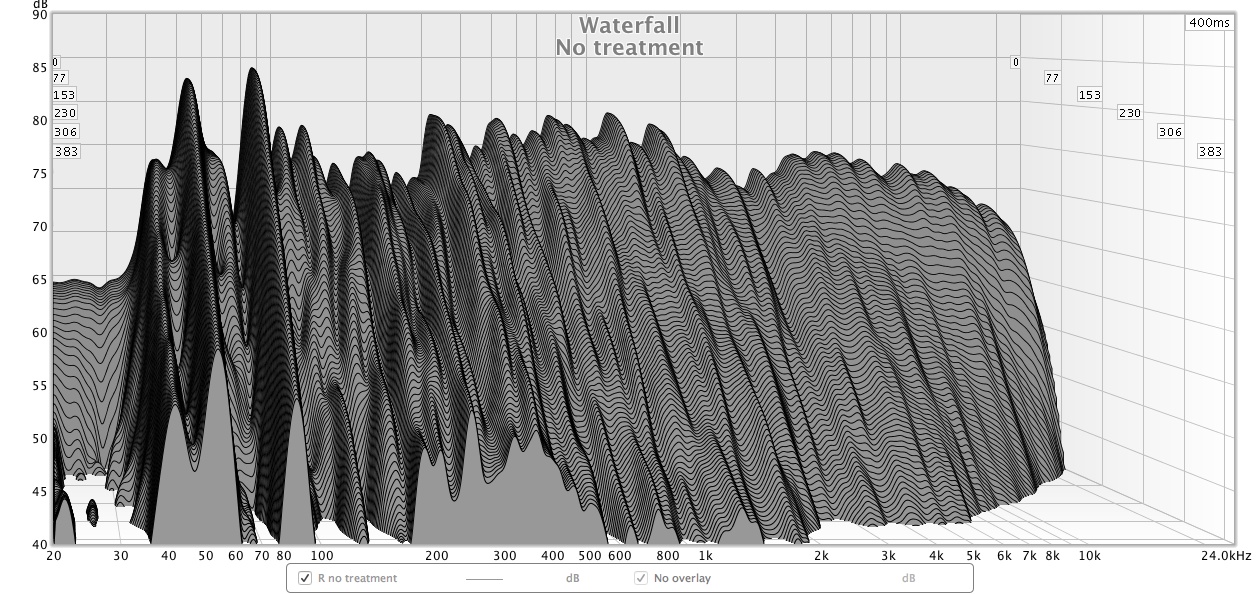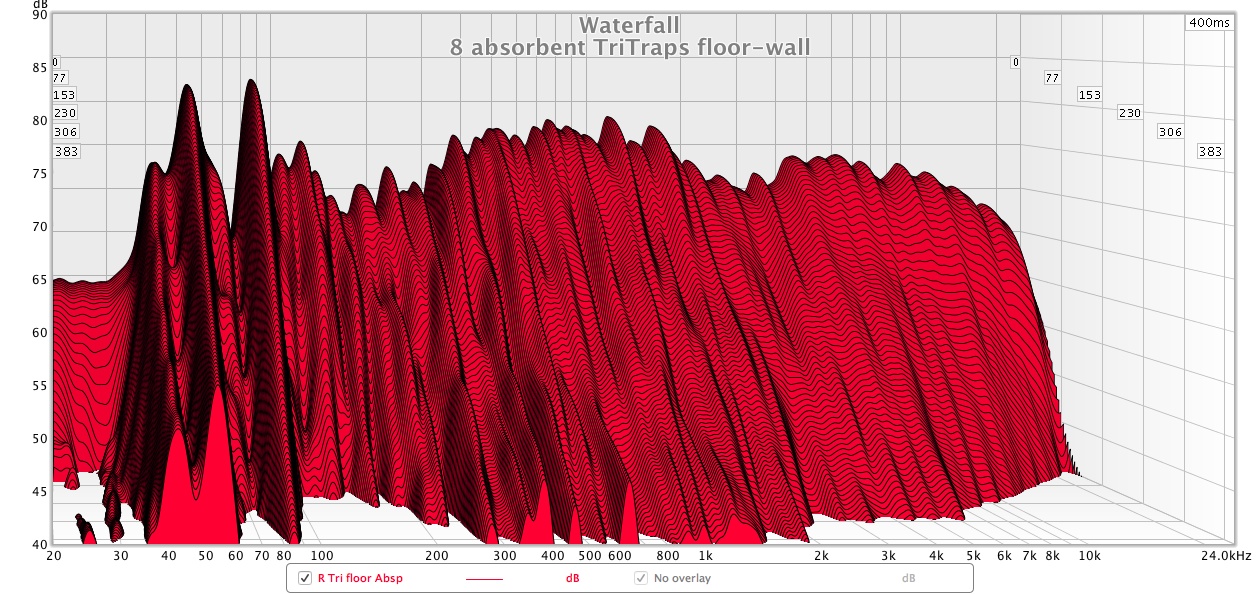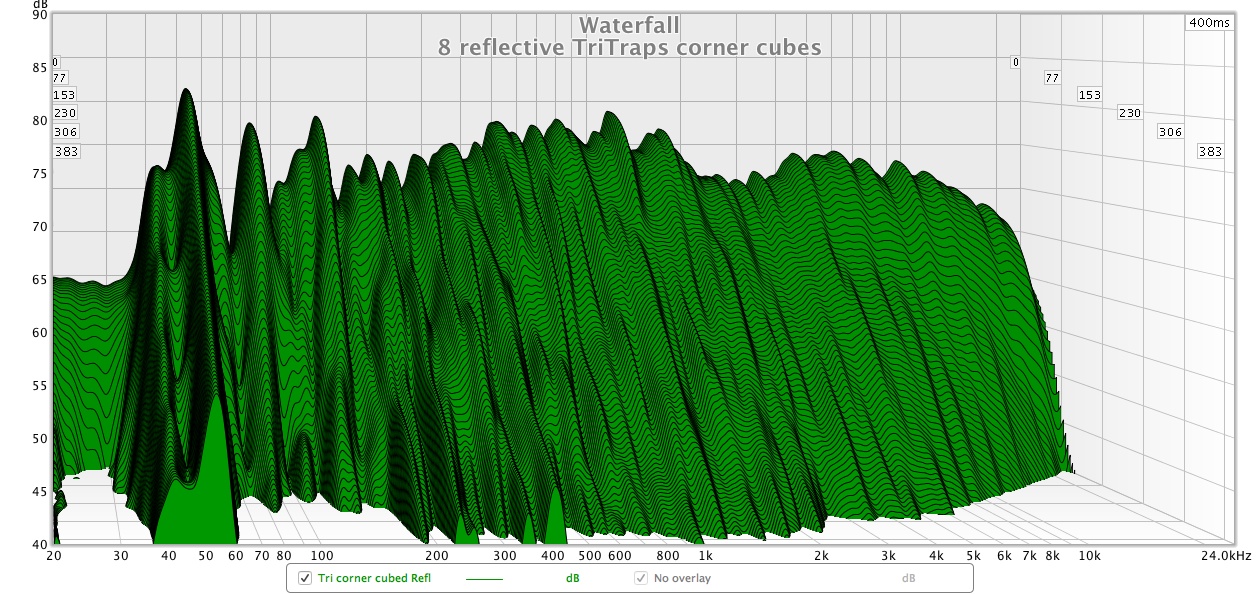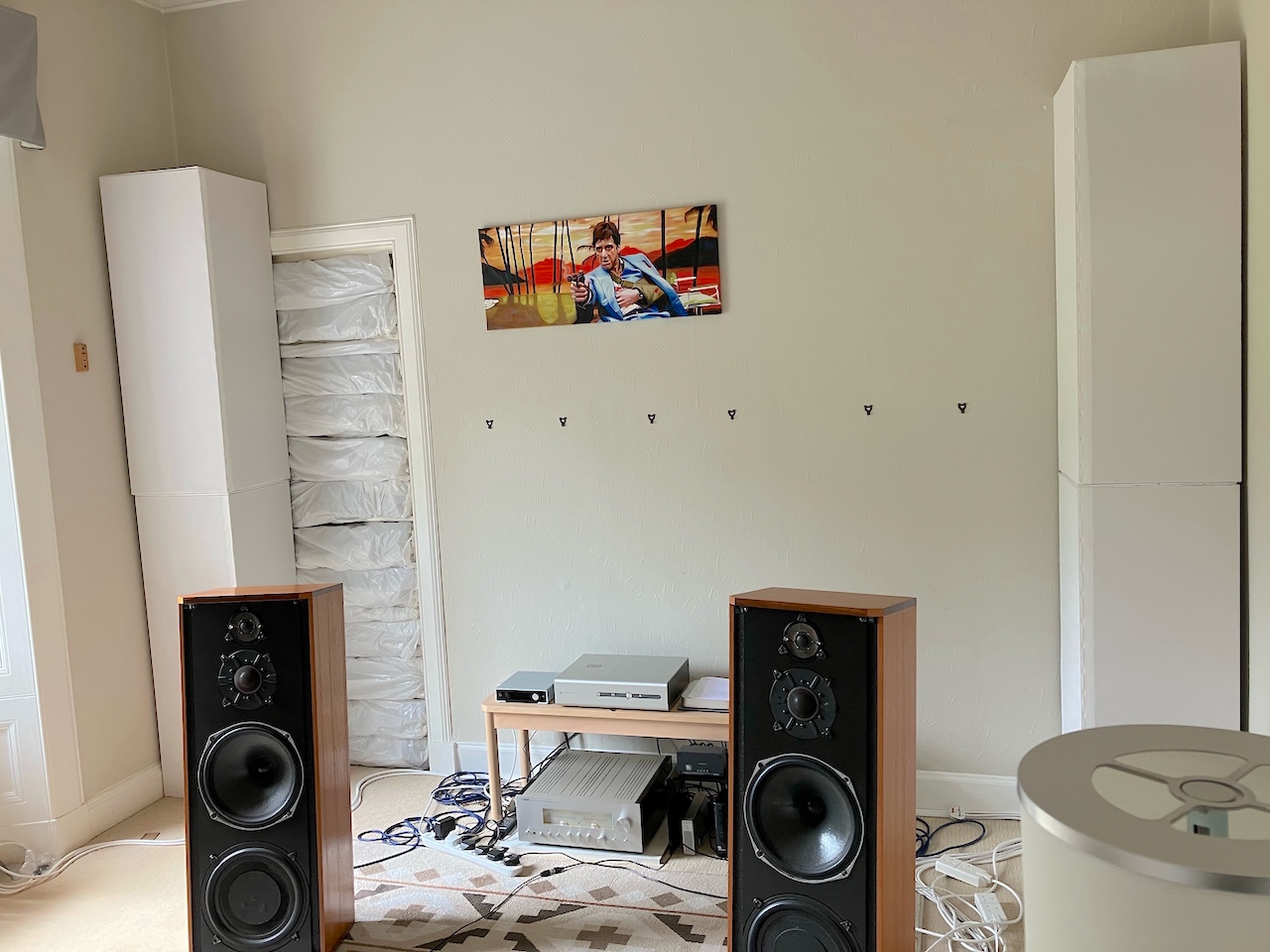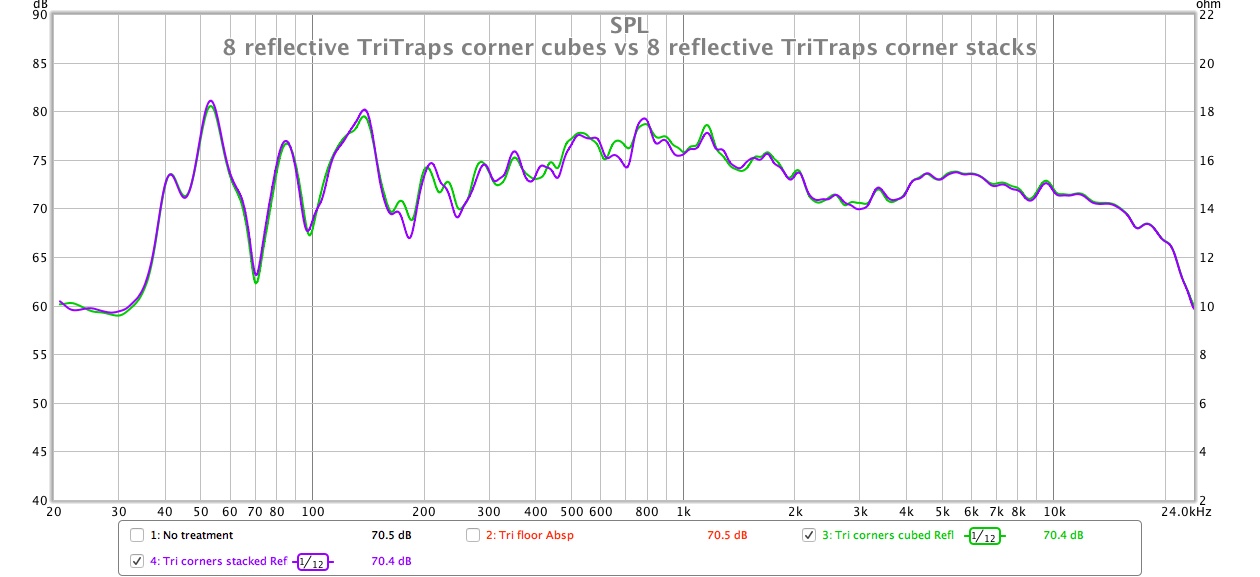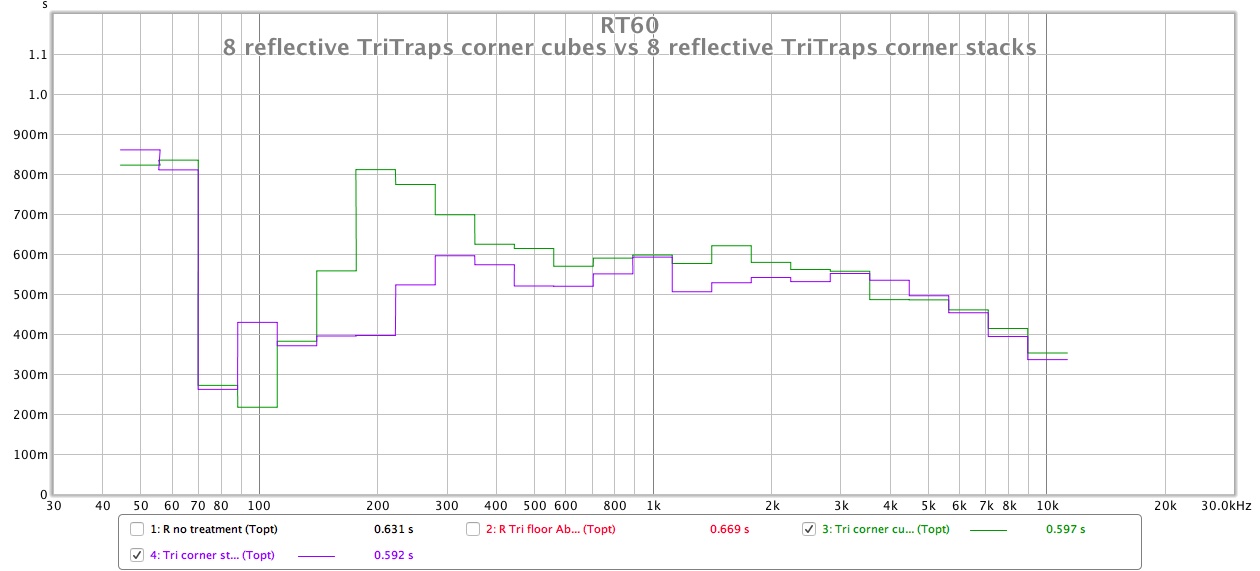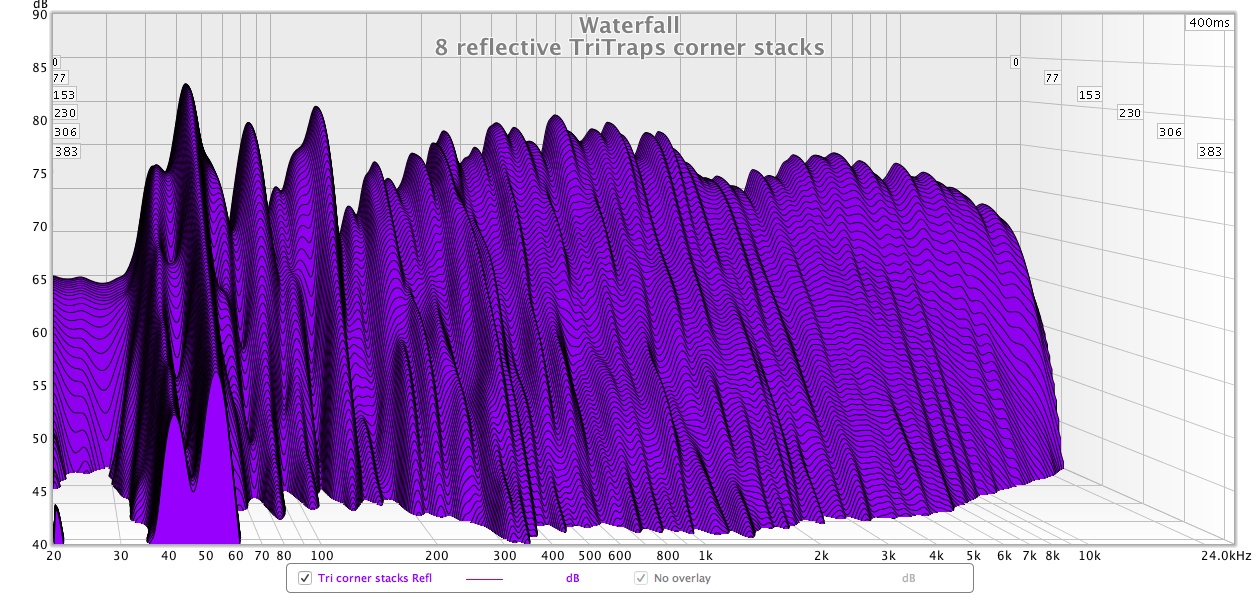42Hz Tuned Traps - Part 1 of 2 (I exceeded the maximum number of 20 images permitted per post!  )
)
My experiences with GIK Scopus 42Hz tuned traps last year were a mixed bag. When I arranged them in a low 4x1 run or 2x2 square stack on the rear wall behind my listening seat they completely messed up my speakers’ response between 100Hz-200Hz. I assume this is because they are a solid structure and adding them to a room effectively changes the shape of the room and causes LF waves to reflect/diffract differently. I found the most benign place for them was straddling the rear corners behind my listening seat, there they were effective at reducing my 42Hz axial mode ringing without affecting 100Hz-200Hz.
Yesterday I re-introduced the Scopus to my room one at a time, trying them on the rear wall behind the listening seat and then on the front wall behind the speakers. The results were interesting. On the ‘new’ rear wall they didn’t completely screw up 100Hz-200Hz like before, but they did affect the left and right speakers differently in the lower mids. There are too many graphs to post to show how each speaker’s FR was affected by each Scopus configuration, so I’ve cherry-picked what I see are the best- and worst-measuring FRs:


With regards to modal activity, strongest absorption at 42Hz was of course achieved with the maximum number of units possible. I’d caution against judging their effectiveness using only the waterfalls and RT60 due to the margin of error / variance in ringing at low frequencies from one measurement to the next. If you look at the FR graphs below of the averaged L&R spkr responses, the SPL at 42Hz is reduced the most when the units are placed behind the speakers on the front wall in two stacks of two. This appears to support the argument for treating bass as close to the source as possible, or perhaps it shows that my rear wall has less modal activity because of the door.
It goes without saying that these measurements are relevant only for when the speakers and listening position are both 138cm from the front and rear walls. The FR could change completely when I move the speakers closer to the front wall, but that’s an experiment for another day!
Keeping the Scopus on the front will prevent me from positioning my speakers close to the wall, so if I do decide to move my speakers the Scopus will likely need to go on the rear wall. However, having a square stack of 4 Scopus on the rear wall causes the early reflection to arrive 2ms sooner (6ms vs 8ms at the moment with the listening position 138cm from the rear wall) so would need to be treated with either absorption or diffusion.
My original plan was to put Q7D diffusors in the middle of the back wall. I could put these in front of the Scopus, but that means the diffusors will be 25cm closer to my listening seat and will make the minimum recommended listening distance harder to achieve. A better option would perhaps be to put two Scopus low down in the middle of the rear wall and the other two on the front wall (one unit under each corner trap). This would then allow me to stack the Q7Ds on top of the Scopus on the rear wall. Looks like I’ll be running lots more measurements to find out what's best!


